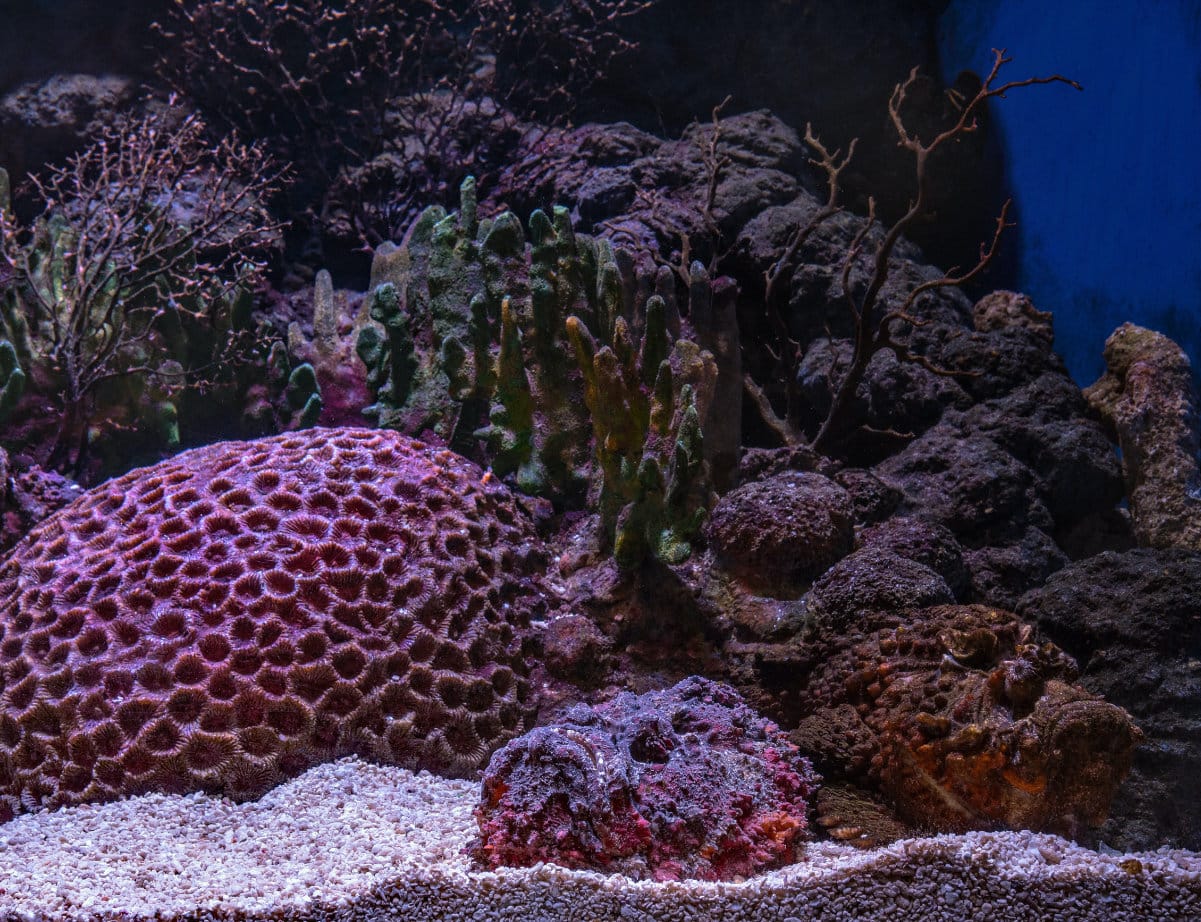FAQ
You have questions we have answers.
Having an aquarium is a challenging hobby. Every tank is different, different substrates, equipment, lighting, livestock. and décor. Through the lifetime of your aquarium, you will have many questions, we hope to answer some of them below. If you don’t see the info you need, please feel free to contact us.

No, LifeRock™ does not need curing. We suggest just rinsing lightly with clean fresh or saltwater to remove any loose particles, and place into aquarium.
Aragalive™ will increase pH and alkalinity and should only be used in marine, reef, or African Cichlid aquariums. If you are using in an African cichlid tank, pour out the liquid first.
No, simply open the bag of Aragalive™ and place the contents into the aquarium. Be sure to put sand in first, not tank water. Pouring sand through the water column can cause unnecessary cloudiness.
LifeRock™ will raise pH and alkalinity and should only be used in marine, reef, or African Cichlid tanks.
Yes, same great product, same product numbers, just a new name.
Yes, but we suggest no more than 50%.
Yes, but only in new tank set ups. Be aware that you will lose some of the biological filtration early on and a longer cycle time can be expected. If you have an existing substrate, do not place any other on top, only mix it in.
Our Super Naturals™ are very smooth-grained and any one would be suitable for bottom dwellers. Our favorite would be Peace River.
Once you have your sand/gravel and water in the aquarium, place all your rocks and décor in too. If you have a Bio-Magnet packet™, be sure to use it. Start all your pumps and filters. Depending on the product, your tank should begin to clear within hours and be completely clear in 24 to 48 hours.
With any new aquarium patience is the key to success. Once the tank has cleared in 24 to 48 hours, we suggest no more than 1 inch of fish per 20 gallons for the first two weeks, then no more than 1 inch of fish per 5 gallons total. For invertebrates, you can place into the aquarium once you can see the back of the tank. Use the same restraint as when adding fish, start slowly.
We suggest mixing in about a cup of sand per day into the existing bed. Do not cap off an old bed with new sand as it can cause another cycle. Always mix gently into the existing substrate.
We suggest starting at one side of the aquarium siphoning and replacing only about 5 to 10% of the substrate per week. Even so, the biological filtration will be impacted somewhat for the next 4 to 6 weeks and water changes should be increased to help counteract accumulation of ammonia, nitrate, and nitrite.
If you are not using Aragalive, Eco-Planted, or Eco-Complete Cichlid, you should rinse the substrate first. The traditional method is to use a clean bucket and place a few pounds at a time in the bucket and rinse with water until it turns from milky to cloudy. Another faster way to rinse the substrate is to cut the upper corners off the bag, insert the hose in one side, and let the dusty water run out the other. Be sure to move the hose around to get all the sand in the bag rinsed. Once the substrate is in the tank with water and décor, start your pumps and filters and any remaining haziness will be removed.
The general rule is 1 to 2 pounds per gallon, but if you want to be more precise, you can use the following equation. In inches: Length x Width x Bed Depth Desired. Then divide by 1,728. Then multiply by the approximate substrate density: Super Naturals: 100 lbs, Eco-Planted: 80 lbs, Aragalives™ and Ocean Direct™: 100 lbs, Crushed Coral: 75 lbs Special Grade Reef Sand: 85 lbs, Aragamax™: 100 lbs, Fiji Pink and Special Grade Reef Sand (dry) 90 lbs, African Cichlid Sands: 100 lbs, African Cichlid Gravels: 75 lbs. Your answer is how many pounds you will need.
